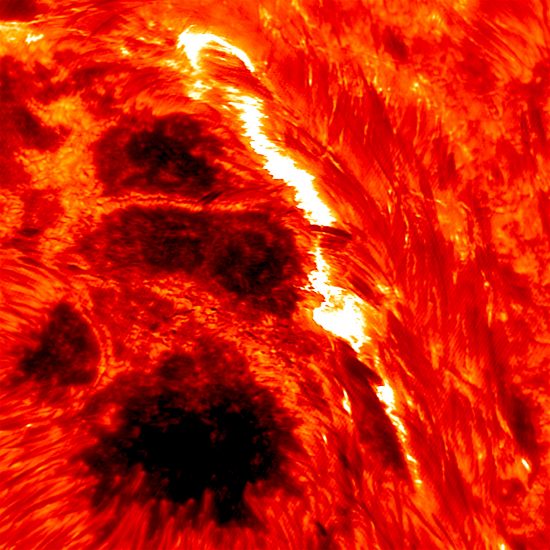
Sep 24, 2019
Electricity flowing into and out of the Sun can sometimes release plasma discharges called solar flares.
Consensus astrophysicists think that solar flares are caused by magnetic loops “reconnecting” with each other. The so-called “magnetic energy” short circuit is thought to accelerate gases into space. Magnetic reconnection is not a well-constructed theory, but it is the only explanation offered by heliophysicists.
In an Electric Universe, it is the Sun’s plasma sheath that can trigger a sudden release of solar energy. When charge accumulation grows too strong, the plasma double layer is destroyed, interrupting the charge flow, and blasting stored electromagnetic energy into space. Solar flares act more like lightning bolts in and on the Sun, sometimes throwing vast quantities of matter into space at near relativistic speeds.
Observers using the Fermi Gamma-Ray Space Telescope reported that gamma-rays were detected, although the solar flare that created them was on the far side of the Sun. Fermi detected energies exceeding 3 billion electron volts. Instead of seeking explanations based on electrical activity, the heliophysicists resorted to “impact”, with “collisions” between protons. However, they observed charged particles and not neutral atoms.
This is the difference between hot gas and plasma. Solar flares and other phenomena on the Sun are not caused by gas convection modified by magnetism, they are all electrical structures. Sunspots, for instance, reveal filaments. Filaments indicate charge vortices, because electric discharges in plasma form rope-like, hollow tendrils. Being “funnels” of plasma, their centers are darker. Convection cells would appear darker at their edges. Standard theory does not accept that darker regions revealed by sunspots means that the Sun is cooler in its interior.
Plasmas in the Sun’s chromosphere are low density, less than a millionth of Earth’s atmosphere. Temperatures in the chromosphere range from 6000 Celsius near the Sun’s “surface” to a low of 4000 Celsius in its middle regions. An ongoing mystery about the Sun is why temperatures increase to 20,000 Celsius at the top of the chromosphere.
Among heliophysicists, however, the most puzzling aspect is why the corona can be as much as two million Celsius! The hottest region of the Sun begins at 4000 kilometers, extending over a million kilometers from its surface, without any significant temperature drop. No conventional theory adequately explains why this happens.
The Sun is a positively charged electrode in a circuit, while the negatively charged electrode is located far beyond the planetary orbits. The “virtual cathode” is known as the heliopause. The electric solar model predicts that sunspots, flares, coronal holes, and all other solar activity comes from fluctuations in galactic electricity.
Birkeland current filaments slowly move through the Solar System, supplying more or less power to an electric circuit that includes the Sun. The energy powering the Sun is focused from outside and not expelled from inside a thermonuclear core, so its inverted temperature gradient conforms to an electric discharge. The ultimate conclusion, in light of plasma phenomena, is that the Sun is a gigantic electric arc, not a ball of hot hydrogen gas.
Stephen Smith
The Thunderbolts Picture of the Day is generously supported by the Mainwaring Archive Foundation.












